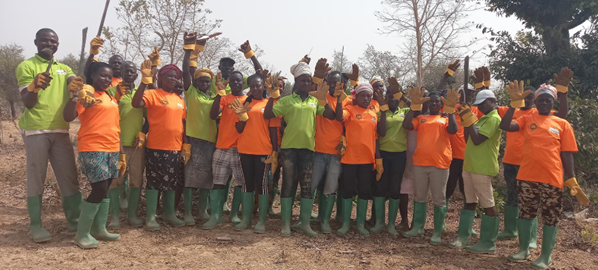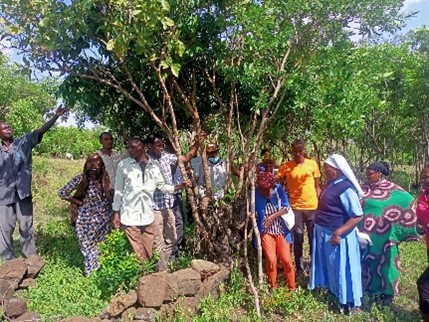


FMNR represents a community development practice. In this sense, FMNR directly aims at participatory, inclusive and community-based and -owned analyses, plans, knowledge sharing and adoption. The following three components are critical in understanding and implementing FMNR as a community development process:
- Connect: Community member come together to participatory analyse, discuss and connect the root causes and consequences of deforestation and landscape degradation in their community. Once the connection has been made, FMNR is introduced as a potential solution.
- Plan: Community members engage in a participatory visioning process to identify common goals and agree on tangible actions to drive and enable the scale-up of FMNR on communal and privately owned/managed land. These plans can vary in formality and may be developed and refined over the years.
- Enable: Community member are trained in the technical knowledge and skills to adopt and promote the practice of FMNR on landscapes. This component also includes the identification, training and follow up of FMNR Champions who actively work to enhance the spread and adoption of FMNR in their communities.
To build awareness and understanding around FMNR among peers, community leaders, and national governments as a low-cost scalable approach. This creates an enabling environment at the community and/or sub-national levels to facilitate its adoption in communities – for example through enabling policies and bylaws.
Engaging the community in the right way from the beginning will be foundational to the success of any FMNR activities going forward. FMNR involves change: not just in the landscape, but often in the ways that people interact with each other. Understanding traditions, traditional roles and the dynamics of people in the community is an important part of engagement. Key principles of FMNR, such as inclusion and ensuring that women and minorities have equal rights and access, may require the community to carefully think through their values and norms. FMNR involves decision-making, therefore community ownership of the process is essential. The technical practices part of FMNR activities are important, but they will not succeed unless the people who use the land more broadly are in agreement on how to manage it, as well as the regeneration of the trees.